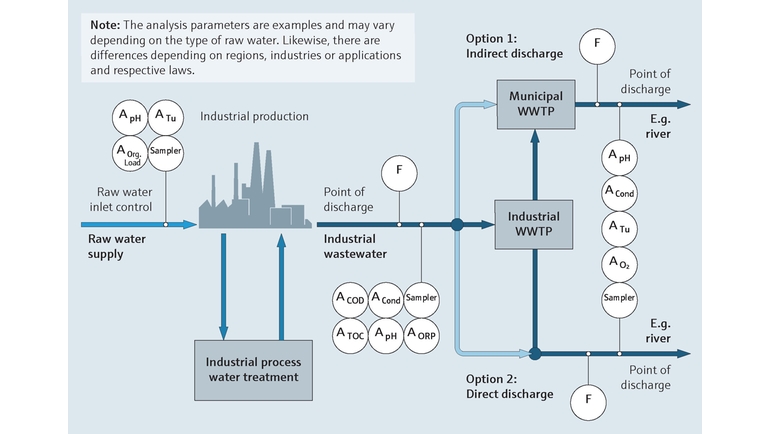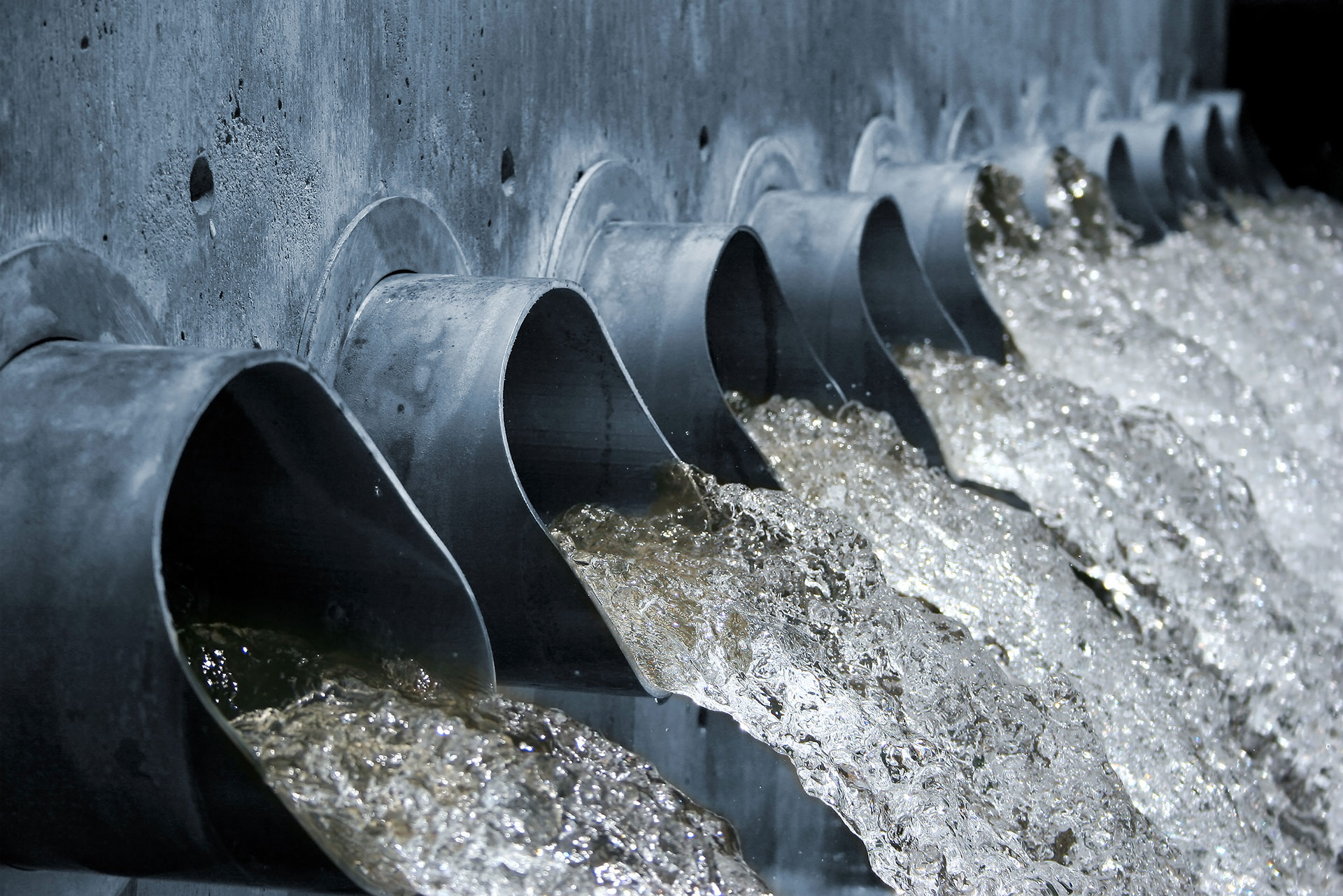Industrial Waste Water Treatment-- Comprehensive Equipments for Wastewater Disposal
Technologies and Advancements in Industrial Waste Water Therapy Technologies
The landscape of industrial wastewater therapy is undergoing a transformative change, driven by developments that boost both performance and sustainability. Arising technologies, such as membrane layer bioreactors and microbial fuel cells, are redefining pollutant elimination processes while adding to energy generation. Additionally, resource recovery techniques are gaining grip, aligning with circular economy principles. As regulative criteria develop, the assimilation of AI and artificial intelligence right into wastewater management systems guarantees to make certain and improve operations conformity. The full implications of these developments increase essential inquiries about their scalability and long-term impact on market methods.
Summary of Waste Water Treatment Technologies
Wastewater treatment modern technologies incorporate a variety of techniques created to remove contaminants from industrial effluents prior to their launch into the environment. These technologies are critical for keeping environmental balance and guaranteeing compliance with ecological guidelines. The main categories of wastewater therapy consist of physical, chemical, and biological methods, each offering distinct purposes based upon the nature of the contaminants present.

Biological therapy methods utilize microorganisms to deteriorate raw material, making them particularly effective for organic-rich effluents. Methods like turned on sludge and biofilm activators harness the natural deterioration abilities of microorganisms, leading to significant reductions in biochemical oxygen demand (BODY)
Advanced Filtering Strategies
Advanced filtration techniques represent an important evolution in the world of commercial wastewater therapy, boosting the efficiency of contaminant removal processes. Industrial Waste Water Treatment. These approaches include a variety of technologies, including microfiltration, ultrafiltration, nanofiltration, and reverse osmosis, which provide sequential obstacles for various bit dimensions and chemical frameworks
Microfiltration and ultrafiltration make use of membrane systems to get rid of suspended solids, microorganisms, and bigger natural molecules, boosting the top quality of effluent before additional therapy. Nanofiltration links the gap between ultrafiltration and turn around osmosis, successfully getting rid of divalent ions and organic compounds, therefore lowering the lots on downstream procedures.
Reverse osmosis provides the highest degree of filtration by enabling only water and tiny particles to travel through its semi-permeable membranes, making it perfect for reclaiming high-quality water from commercial effluents. Current developments in membrane modern technology, consisting of the advancement of more durable and fouling-resistant materials, have dramatically enhanced operational performance and minimized costs.
Including these sophisticated filtering techniques not just enhances the total treatment procedure however also adds to sustainability efforts by making it possible for water reuse and resource healing in industrial setups. (Industrial Waste Water Treatment)
Organic Therapy Advancements

Moreover, the advancement of crafted biological systems, such as membrane layer bioreactors (MBRs), combines biological therapy with innovative membrane layer filtering. This integration enables greater effluent high quality and minimized footprint, making it ideal for space-constrained industrial facilities. Technologies in genetically engineered bacteria have actually likewise arised, boosting the biodegradation of certain pollutants, such as drugs and heavy steels, that are generally challenging to get rid of.
In addition, the application of bioaugmentation strategies, where beneficial microorganisms are introduced to improve the existing organic treatment procedures, has shown encouraging cause boosting treatment efficiency. These developments jointly symbolize a fad towards more effective and lasting biological treatment techniques that can adapt to the progressing intricacies of industrial wastewater streams. As markets proceed to prioritize environmental conformity, these organic developments will play a critical role in wastewater management.

Source Healing Methods
In commercial setups, the integration of source healing methods has actually ended up being increasingly vital for boosting sustainability and lessening waste. These methods concentrate on drawing linked here out valuable products and energy from wastewater streams, therefore transforming possible contaminants into recyclable resources.
One famous technique is nutrient recuperation, where nitrogen and phosphorus, typically existing in excess in wastewater, are recorded and converted right into fertilizers. This not just reduces environmental influences however additionally provides a circular economic climate solution for agricultural applications. Furthermore, modern technologies such as anaerobic food digestion enable the conversion of natural waste right into biogas, a renewable resource source that can counter nonrenewable fuel source use in commercial procedures.
Additionally, progressed filtration and membrane innovations facilitate the recovery of industrial byproducts such as salts and steels. These recovered materials can be reintegrated right into manufacturing procedures, decreasing the requirement for virgin sources.
Future Fads in Waste Water Management
As markets significantly focus on sustainability, the future of wastewater administration is readied to undertake significant changes. Technical innovations, such as expert system and artificial intelligence, will certainly make it possible for extra reliable surveillance and management of wastewater systems. These innovations can anticipate maintenance requirements, enhance treatment processes, and improve decision-making, eventually minimizing functional expenses and environmental effect.
Additionally, the combination of round economic situation principles will certainly play a crucial duty in wastewater monitoring. Industries are anticipated to change in the direction of systems that not only treat wastewater but also recover beneficial sources, such as nutrients, water, and power. This shift will certainly decrease waste and advertise the reuse of materials, aligning with international sustainability objectives.
Emerging treatment strategies, such as membrane layer bioreactors and advanced oxidation processes, will certainly better improve the effectiveness of wastewater treatment, permitting better effluents appropriate for reuse. Furthermore, regulatory structures are likely to evolve, stressing more stringent standards for wastewater discharge and motivating markets to adopt cutting-edge therapy options.
Final Thought
In final thought, the advancement of industrial wastewater treatment innovations shows a significant shift in the direction of boosted efficiency and sustainability (Industrial Waste Water Treatment). Advancements in innovative filtration techniques, biological treatments, and source recuperation my site approaches highlight the industry's dedication to environmental stewardship.
The landscape of industrial wastewater therapy is undertaking a transformative change, driven by innovations that improve both effectiveness and sustainability.Wastewater therapy modern technologies incorporate a range of methods developed to eliminate contaminants from industrial effluents prior to their launch right into the setting.Harnessing the power of biological processes has led to significant developments in the treatment of commercial wastewater.Furthermore, the application of bioaugmentation approaches, where beneficial microbes are presented to boost the existing organic therapy procedures, has shown promising results in boosting therapy efficiency. These advancements collectively represent a fad in the direction of even more sustainable and efficient organic treatment approaches that can adapt to the evolving intricacies of commercial wastewater streams.